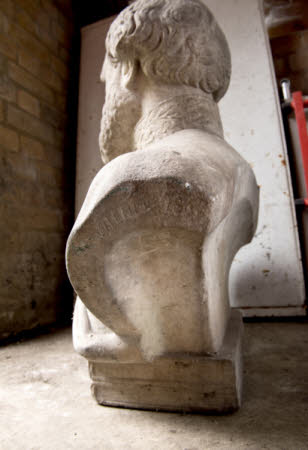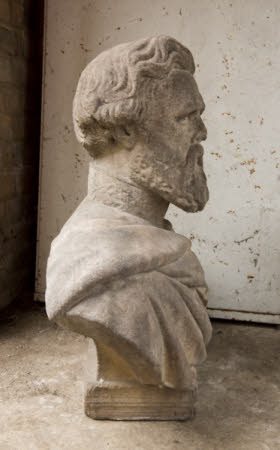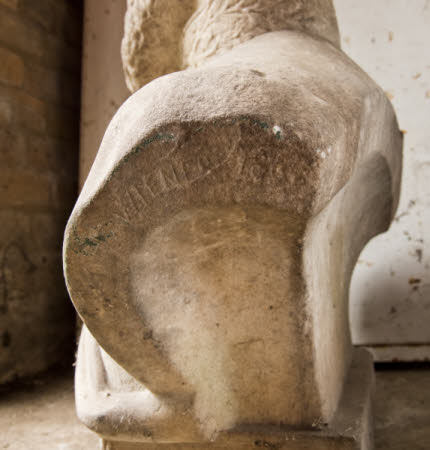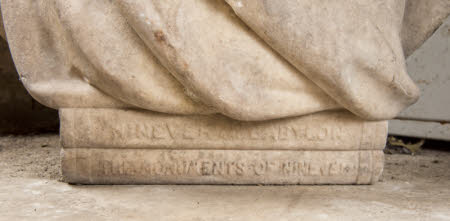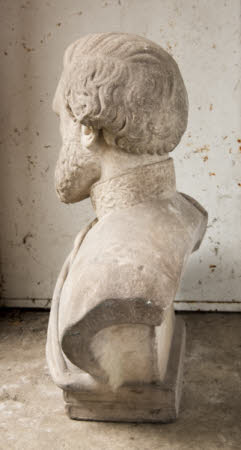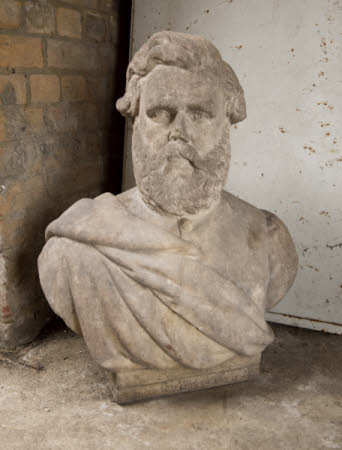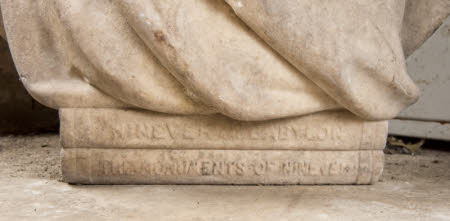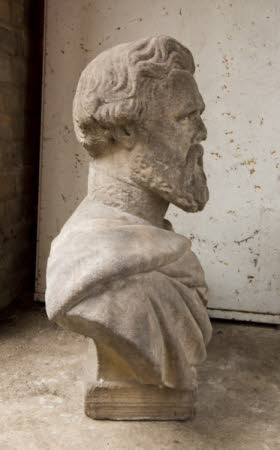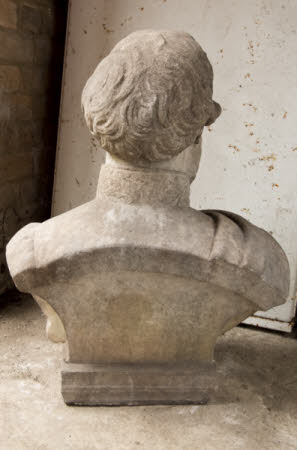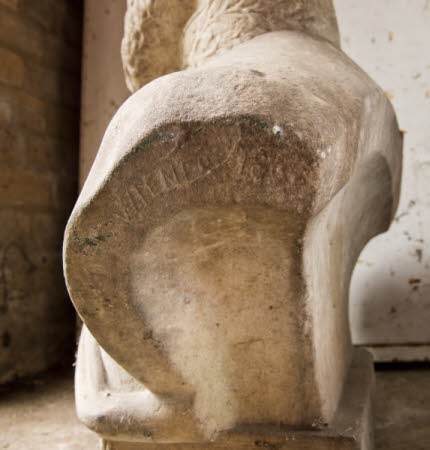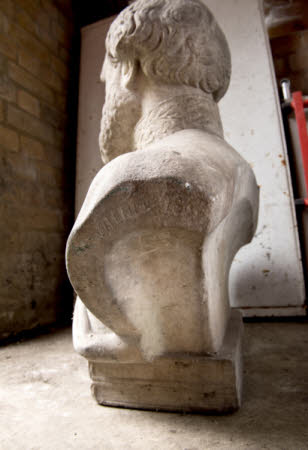Sir Austen Henry Layard
Charles Weiner (1832 - 1887)
Category
Art / Sculpture
Date
1866 (signed and dated)
Materials
Marble
Measurements
700 x 490 x 280 mm
Place of origin
Great Britain
Order this imageCollection
2 Willow Road, London
NT 113257
Summary
A marble bust by Charles Wiener (1832-1887) of Sir Austen Henry Layard (1817-1894), in uniform with a high collar decorated with leaf patterns, a cloak over his right shoulder. The bust rests on two books, the titles inscribed on the spines: Nineveh and Babylon and The Monuments of Nineveh. Signed on truncation of bust ‘CH. WIENER 1866’. The bust was kept in the garden of 2 Willow Road and is heavily weathered.
Full description
Sir Austen Henry Layard (1817-94) was an archaeologist and politician who became a celebrity in Victorian Britain, as a result of his discoveries of the remains of the great Assyrian civilisations of Nineveh and Nimrud, through excavations carried out in the 1840s whilst he was attached to the British Embassy in Constantinople. Layard returned to Britain in 1848, where some of the great finds from his first excavations had arrived in the British Museum. In 1849 he published his book Nineveh and its Remains along with a volume of plates and other images, The Monuments of Nineveh. Between October 1849 and April 1851 he conducted further major excavations which were the subject of a second work Nineveh and Babylon, published in 1853. Layard’s discoveries and publications not only transformed scholarly understanding of Assyrian culture, its language and its achievements, but also led to a brief craze for Assyrian ornament and styles in jewellery and the decorative arts. Layard shortly thereafter left archaeology for politics, where he enjoyed a modestly successful career, before being appointed Ambassador to Madrid, in 1869. Between 1861 and 1866 he served as Under-Secretary at the Foreign Office. In this bust, which seems to be dated 1866, Layard is depicted wearing the diplomatic uniform of this post, whilst the bust section rests on two of his famous books on his Assyrian discoveries. The sculptor of this hitherto unknown portrait bust, Charles Wiener, was one of three brothers of Hungarian Jewish origin whose family settled in Belgium in the early 19th century and who all went on to practise as medallists and sculptors. The other two brothers were Jacques (1815-1899) and Léopold (1823-1891). After studies in Brussels and in Paris, Charles Wiener settled in 1856 in The Hague, where he became Engraver and Sculptor to the King of the Netherlands. In 1862 he came to London where he was received an appointment at the Royal Mint, but he shortly afterwards moved to Lisbon where he worked from 1864, before his permanent return to Brussels in 1867. After his return to Belgium he continued to receive commissions from Britain, including in 1874 a City of London medal to commemorate the visit of Czar Alexander II to London, and another in 1882 commemorating the gift to the nation by Queen Victoria of Epping Forest. Whilst by far the greater part of Wiener’s work was as a medallist, he did also work as a sculptor. He contributed to exhibitions in Lisbon in 1865 and 1866 many medals and coins, but also a cameo, some portrait medallions in terra cotta and two busts (A. Lamas, Le Séjour à Lisbonne de Charles Wiener, Gazette numismatique française, XIV (1910), pp. 127-41, esp. pp. 133-34). The other two known sculpted busts of Sir Austen Henry Layard are both in the British Museum, where many of the spectacular finds from his excavations are housed. A bust of 1855 by the Scottish sculptor Patrick Park (1811-1855) shows Layard in an ideal and heroic mode, and is inscribed on the back ‘NINEVEH’. (Aileen Dawson, Portrait Sculpture. A Catalogue of the British Museum collection c. 1675-1975, London 1999, pp. 128-31, no. 48). The best-known sculpted portrait is however that by Sir Joseph Edgar Boehm (1834-90), made in 1890, which is a much more formal image of a much older Layard (Dawson, pp. 131-33, no. 49). A portrait bust of a member of the Victorian establishment could hardly be farther from the modern art collected by the Goldfingers, although it is the sort of object that might have appealed to Erno Goldfinger’s surrealist instincts. It was kept on the lawn of the garden of 2 Willow Road, placed directly onto a square piece of flat stone, with no pedestal, so that it effectively sat upon the ground. Although Goldfinger no doubt regarded it as an amusing curiosity, he seems to have been fond of the bust and had himself photographed standing by it late in his life. Jeremy Warren, 2018
Provenance
Bequeathed to the National Trust by Ernö Goldfinger (1902-1987) and Ursula Ruth Blackwell, Mrs Ernö Goldfinger (1909 - 1991), formally acquired in 1994.
Credit line
National Trust Collections (2 Willow Road, The Ernő Goldfinger Collection)
Marks and inscriptions
On spines of books: Titles in relief lettering: Nineveh and BABYLON The Monuments of Nineveh
Makers and roles
Charles Weiner (1832 - 1887), sculptor

